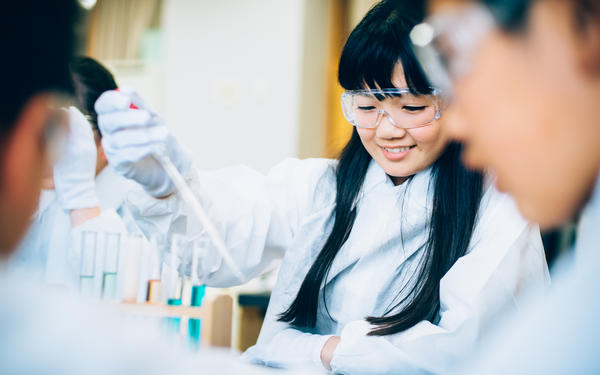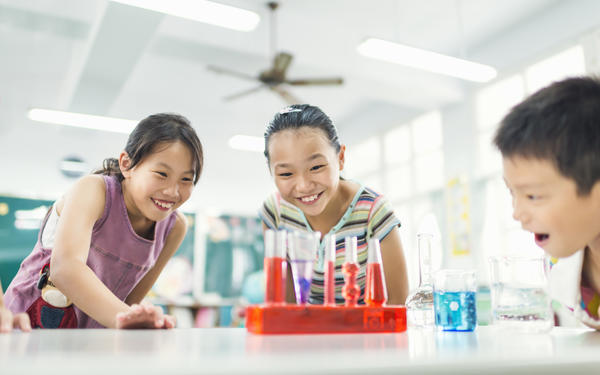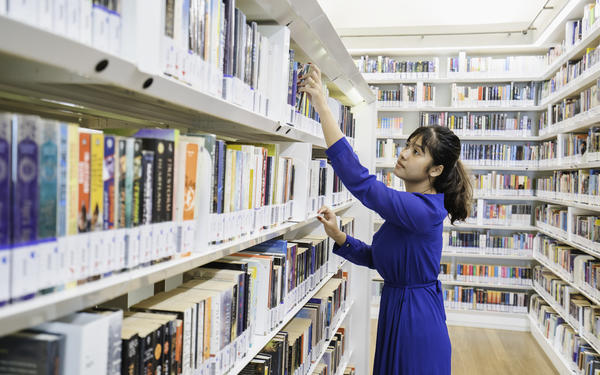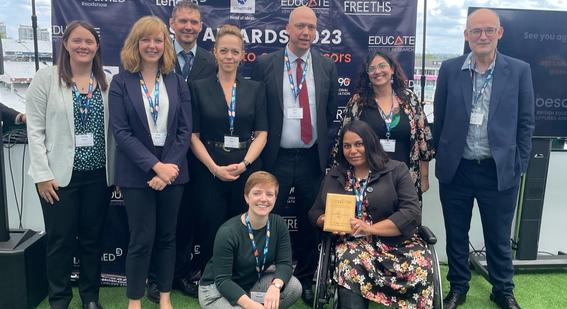What are the secrets to successful science education (if any)? Lessons from high-performing education systems
High quality science education can help provide young people with the skills and knowledge to navigate a world full of new technologies and abundant, often-conflicting information.
But how can you achieve education success in science in your country? Is there a "secret formula”? It’s a question that’s crucial to us at Cambridge Partnership for Education, a department of Cambridge University Press & Assessment and part of the University of Cambridge that helps governments around the world to improve the quality of education systems.
To help answer the question, we wanted to share new research findings from Dominika Majewska, who has been investigating the links between countries that rank highest around the world for science education. Dominika works in the Research Division at Cambridge University Press & Assessment, which carries out a wide range of research in education, curriculum and assessment.

Is there a secret formula for education success in science? That was among questions I set out to answer in 2021 when I started a project to try and better understand what we can learn from the parts of the world that perform particularly well in science education.
The one thing that became very clear through my reading is that local context, culture, and history are essential in building a picture of a system, its educational performance and education reform. With this in mind, it is still interesting and valuable to look at what other countries or regions are doing.
So, I wanted to look at the education systems which performed the best for science in the latest PISA assessment, which took place in 2018. PISA (or the Programme for International Student Assessment) is run by the OECD every three years in various countries and looks at 15-year-olds’ performance in reading, mathematics and science. A big part of science is known as ‘scientific literacy’. The OECD defines a scientifically literate person as someone who is happy to talk about science and technology, therefore can explain phenomena in scientific ways, evaluate concepts, design scientific enquiries, and interpret data and evidence in a scientific way.
The five top performers in the 2018 science part of PISA were: mainland China, followed by Macao (a Special Administrative Region of China [S.A.R.], which doesn’t have the same education system as mainland China), and then Singapore, Japan and Estonia.

My review revealed some common themes between the five systems, including:
- Scientific literacy is recognised in the curricula as important: for example, the development of scientific literacy is mentioned as an aim in some of the curricula, specifically in mainland China, Singapore and Macao S.A.R.
- The value of research and evidence in informing science curriculum development: for example, in China, professional scientists play a part in curriculum development, while in Estonia, the Ministry of Education and Research is involved in researching, analysing and evaluating the educational landscape and in commissioning studies from experts and researchers.
- A strong system of teacher training and continuing professional development: the literature I read showed that a lot of emphasis is placed on professional development for teachers in Estonia and Japan. Also, mainland China, Estonia and Japan have high entry requirements to enter teaching courses. In Singapore, teachers can receive financial support to study at master’s and doctoral levels.
- Science opportunities outside of school: for example, Singapore, Macao and Estonia offer additional opportunities to students to increase their awareness, understanding and engagement in science. This includes various trips, exhibitions and programmes run by universities and the government.
- Pedagogy and students’ reported experiences: there is some evidence of similarities from one study which looked at the 2015 PISA data. This study found similarities, including teachers spending a substantial amount of class time explaining scientific concepts, as well as on class discussions where students could express their ideas, and on practical science work. This includes investigations involving the design of experiments. However, there are exceptions, such as Japan, which had less direct teaching, class discussion, and opportunities for students to express their ideas. So, the picture of what happens in classrooms is complicated.

A complex puzzle
Although this review identified some common themes that may be linked to high performance in science – and could be valuable to consider elsewhere – no-one should conclude that these themes are definitely responsible for the high performance of the five systems I looked at. The findings can’t simply be injected into an education system as a magic formula to improve science performance – many other things are also important to consider, like culture or history of the system.
My research also uncovered some key differences between the education systems.
For instance, Macao S.A.R. - in contrast to mainland China, Singapore, and Japan - appears to have a highly de-centralised education system, with a large proportion of private schools, which do not have to stick to one curriculum. Schools and teachers in Macao also appear to have more autonomy, but there have been attempts at centralising education in Macao. It is also one of the less established education systems after gaining its sovereignty from Portugal in the late 1990s.
Another clear difference is the emphasis that Estonia places on access to high quality education for all students and the help that is given to students from low socio-economic backgrounds.
Also, while it became clear that inquiry approaches in teaching and learning were a key pedagogical approach mentioned across the jurisdictions, the evidence on whether inquiry-based learning happens in classrooms is inconsistent and mixed.
There are other factors that were not included in my review, such as attitudes towards science learning or parental support, that may also impact on performance. Likewise, it’s key to remember that every education system is embedded within a wider social space that contributes to the system, including a unique history, culture and socio-economic climate.
Considerations for policy makers
Despite the caveats I identified, the themes that have emerged may offer some thinking points for education professionals and policymakers in the context of their own education systems.
For instance, it may be useful to consider teacher training and development, the content of curriculum documents and the role that scientific literacy plays in the curriculum, as well as the influence of research on the development of science curricula, pedagogy and students’ experiences, and opportunities for learning science outside the classroom.
Full report
For the full report, including the sources that were used to inform this blog, please see:
Majewska, D. (2023). Scientific literacy – what can we learn from high performing jurisdictions? Cambridge University Press & Assessment.
If you’re working to improve the quality of your country’s education system, then please contact Cambridge Partnership for Education to discuss how to achieve your goals.



